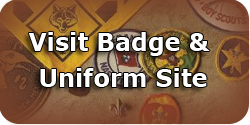|
Hi Mason!!
You wrote a great set of questions:
“My name is Mason Thomas (we recently became friends on Facebook) I was an OA Region Chief a few years back and have since stayed involved with my local council, district, and have helped start up a new troop in Columbia, SC. I have a couple of questions for you (which may follow with others) that I believe you will be able to assist me with because of your extensive Scouting knowledge and connections.”
I will do my best…
“What are the various BSA National Committees out there? Obviously there are the well-known ones like the National OA, Catholic, Jewish, and Scoutreach Committees but there must be others. Also do you have contact info on those committees or know where to find them?”
The BSA currently has 15 standing committees (Membership, Relationships, Program, Supply, Administration, Volunteer Training, Professional Training, Commissioner Service and Training, Finance, Health and Safety, Advancement, Outdoor Programs, Conservation and Historical Preservation, International, and Nominating). These committees meet consistantly during the year.
Additionally, the BSA has 16 major sub-committees. OA, for instance, is a sub-committee of the BSA’s Program Committee. Catholic, Jewish, LDS, Protestant, and a couple other faiths are sub-committees of the BSA’s Relationship Committee. Other sub-committees include the Labor Relationship, SCOUTREACH (which is actually named the Rural/Urban Scouting Relationships sub-committee), Jamboree (which is a sub-committee of the Outdoor Programs Committee), West Fellowship (a sub-committee of the Finance and Risk Managment Committee), NESA (a sub-committee of the BSA’s Advancement Committee), Philmont Training (a sub-committee of the BSA’s Volunteer Training Committee), Insignia and Uniforming Guidance (a sub-committee of the Supply Committee), and there are still sub-committees on Cub Scouting, Boy/Varsity Scouting, Venturing and Sea Scouting even though all of them were supposed to be rolled up into a grand Program Group Committee two years ago.
Finally, the BSA has several other minor sub-committees which address tasks like the Drug Abuse Prevention, Emergency Prepareness, External Organizational Relationships, and the like. They are sometimes referred to as “Task Forces” but most of the time they are operating as national committees.
“Who regulates BSA Advancement and Uniforming / Insignia?”
Advancement is managed through the Associate National Director of Program for Advancement and his volunteer Advancement sub-committee of the Program Group Committee.
Uniforming and Insignia Guidance (used to be called “Insignia and Uniforming”) is managed by the Associate National Director of the Supply Group; he is supported through a nineteen member volunteer Uniforming and Insignia Guidance sub-committee of the Supply Group Committee.
“What does the Area Committee do? What is its function and who are primarily its members?”
A Regional Area is a subset of a Region. Depending on the Region, there may be five, , seven eight, or nine Areas within that Region. Look it a like the Region is a local Council and the Areas are Districts within that local Council.
Like local Councils, Areas are composed of three or more local Councils residing in that geographical location. It could be a portion of a state, like most of downstate New York less New York City and a couple of other nearby Councils in one Area. It could be entire states, as most of the New England States are in Area One, Northeast Region. It could be most of a single state, for instance everything in Florida except for two Councils are in Area Seven, Southern Region.
Regional Areas do three things: manage the professional staffs — the Area Director is the “supervisor” or “boss” of the Council Scout Executives within his or her Area. They manage multi-council events and activities (for instance the Order of the Area has one, two or three Sections which are basically dual or triad Council “matchups” whereby OA programming is shared between the Councils; another example is Wood Badge courses coordinated through the Area in which local Councils within that Area takes turns hosting the Wood Badge course). The final thing that Areas do are to manage the administration of Scouting and its relationships with outside organizations and groups.
To do this, each Area elects a President and two Vice Presidents. There is a move presently also for each Area to have an Area Commissioner, but that has not happened yet. The “key three” along with the National Council Representatives in each Council are members of the Area Committee and they elect the officers to serve on a two-year term. Area Directors (and if the Area is large enough, an Associate Area Director) serve until they are promoted within the Region or they retire.
“Thanks for any help you may be able to provide with these questions. I appreciate all of your hard work and your contributions to the Scouting Movement!” No problem…Hope that this helps out, Mason!!
Mike Walton
— Settummanque is writer, military officer, dad, friend, traveler, public speaker, webmaster, Eagle Scout, and/or “sweetie” (LTC) Mike Walton. South Lake Minnetonka area, Minnesota. http://www.settummanque.com |







5 Responses to National BSA Question